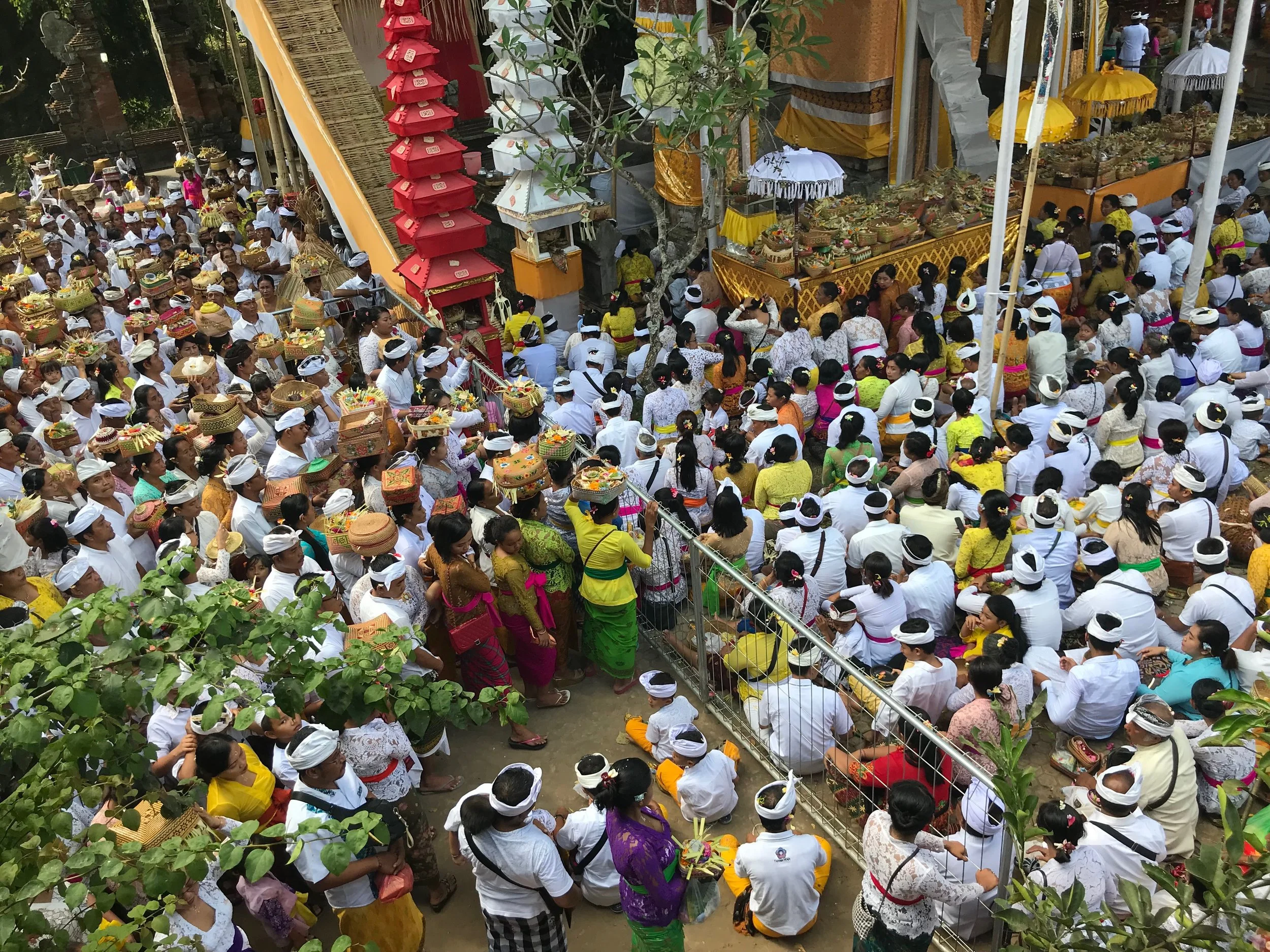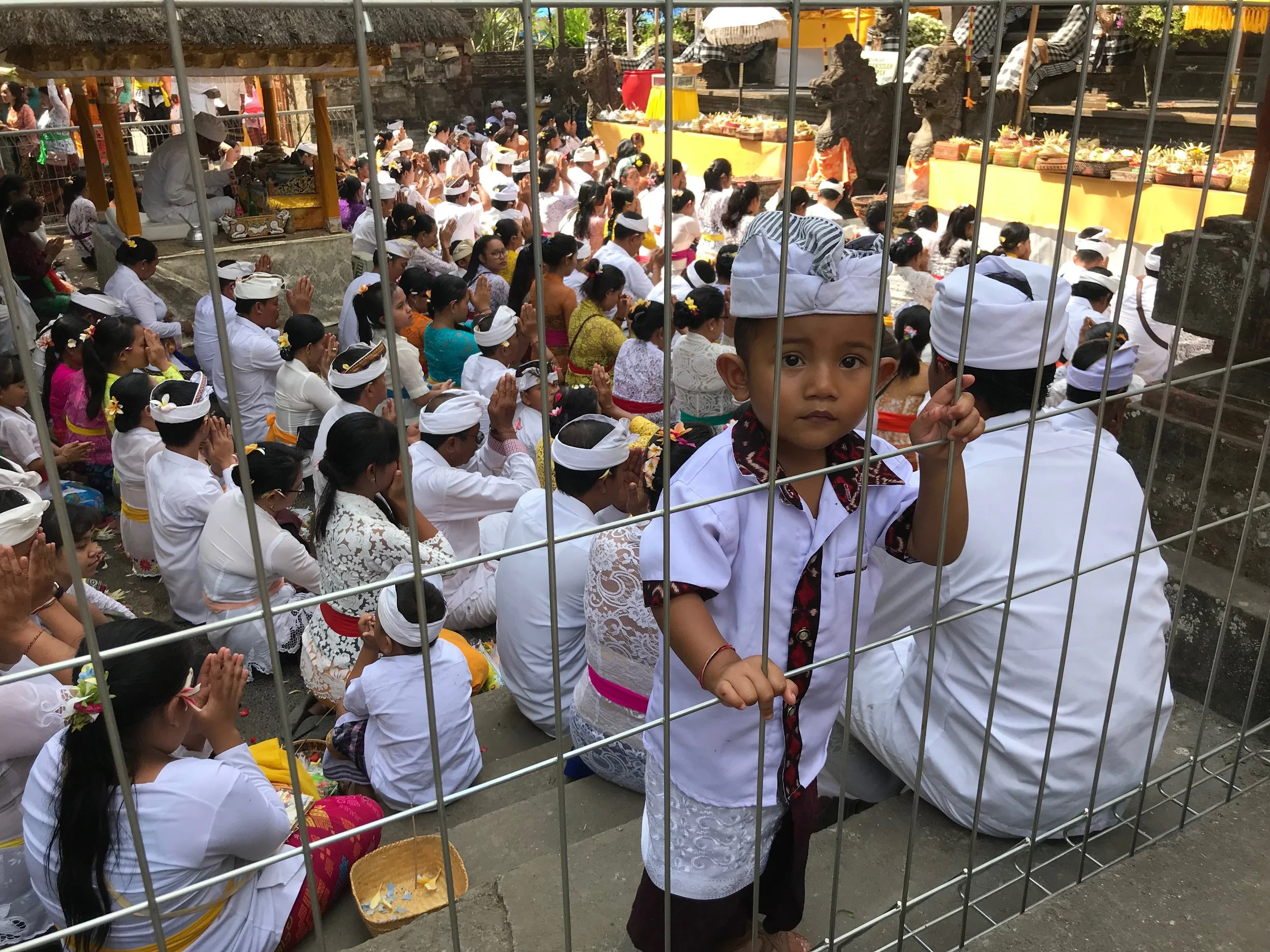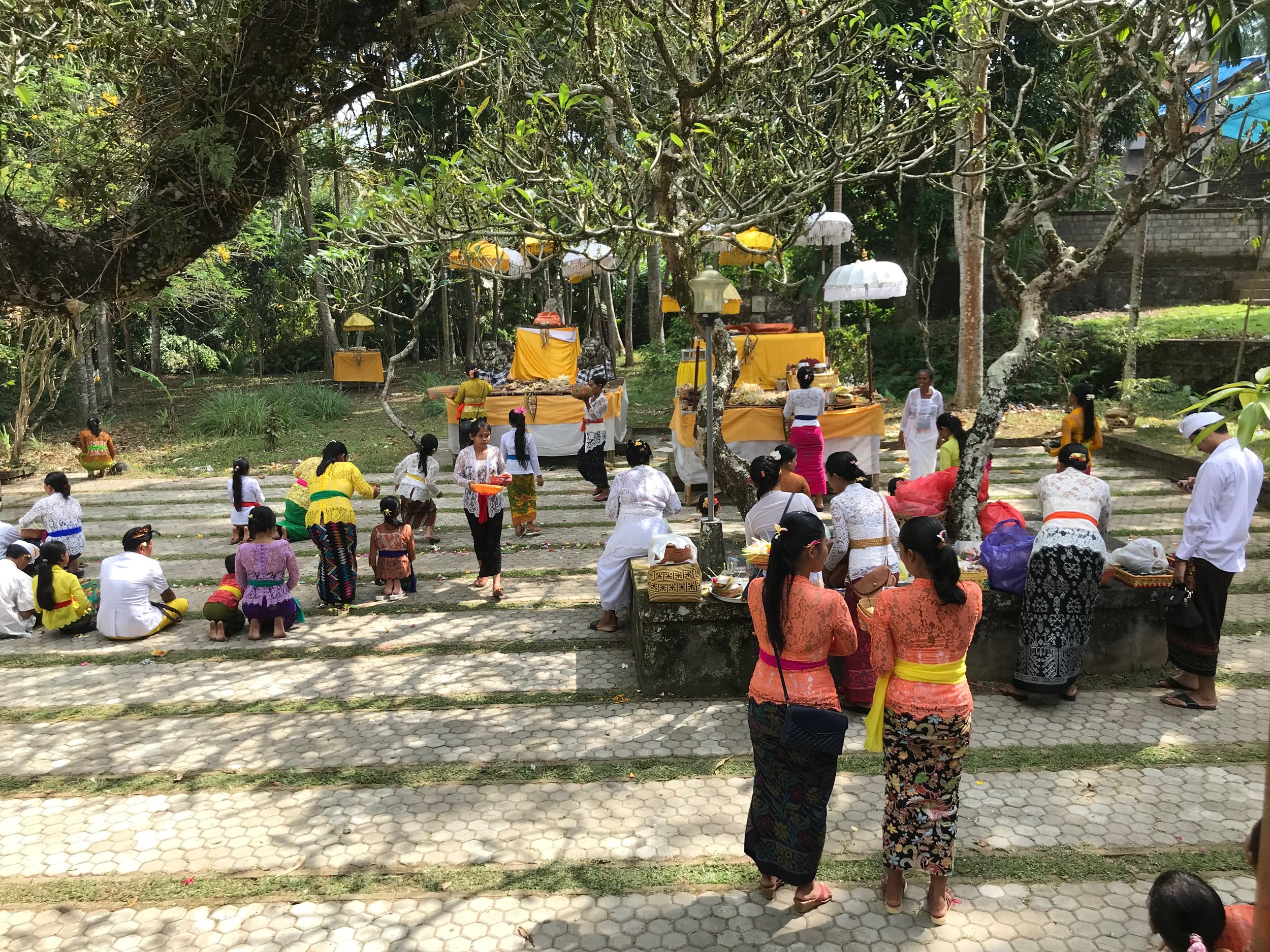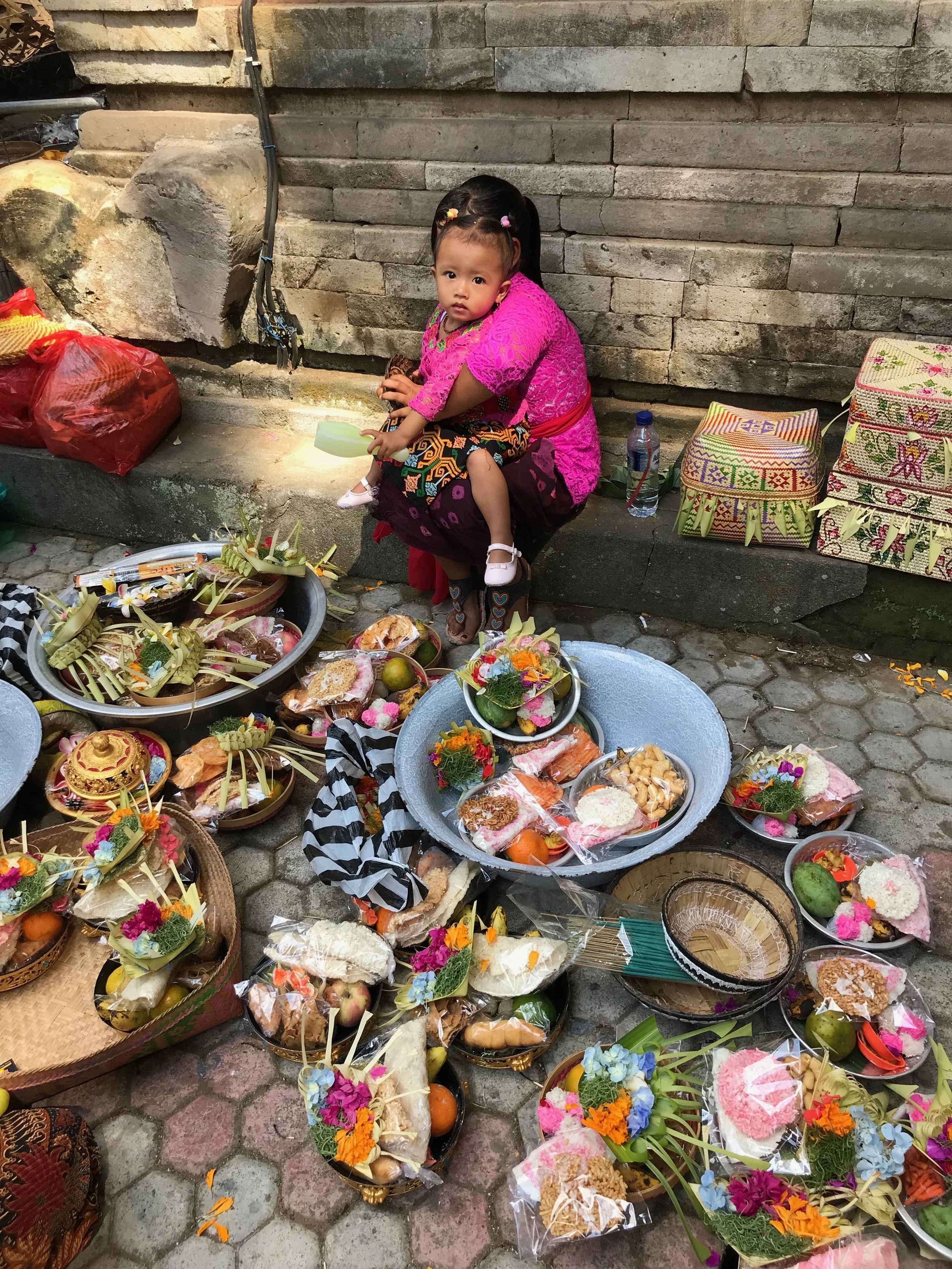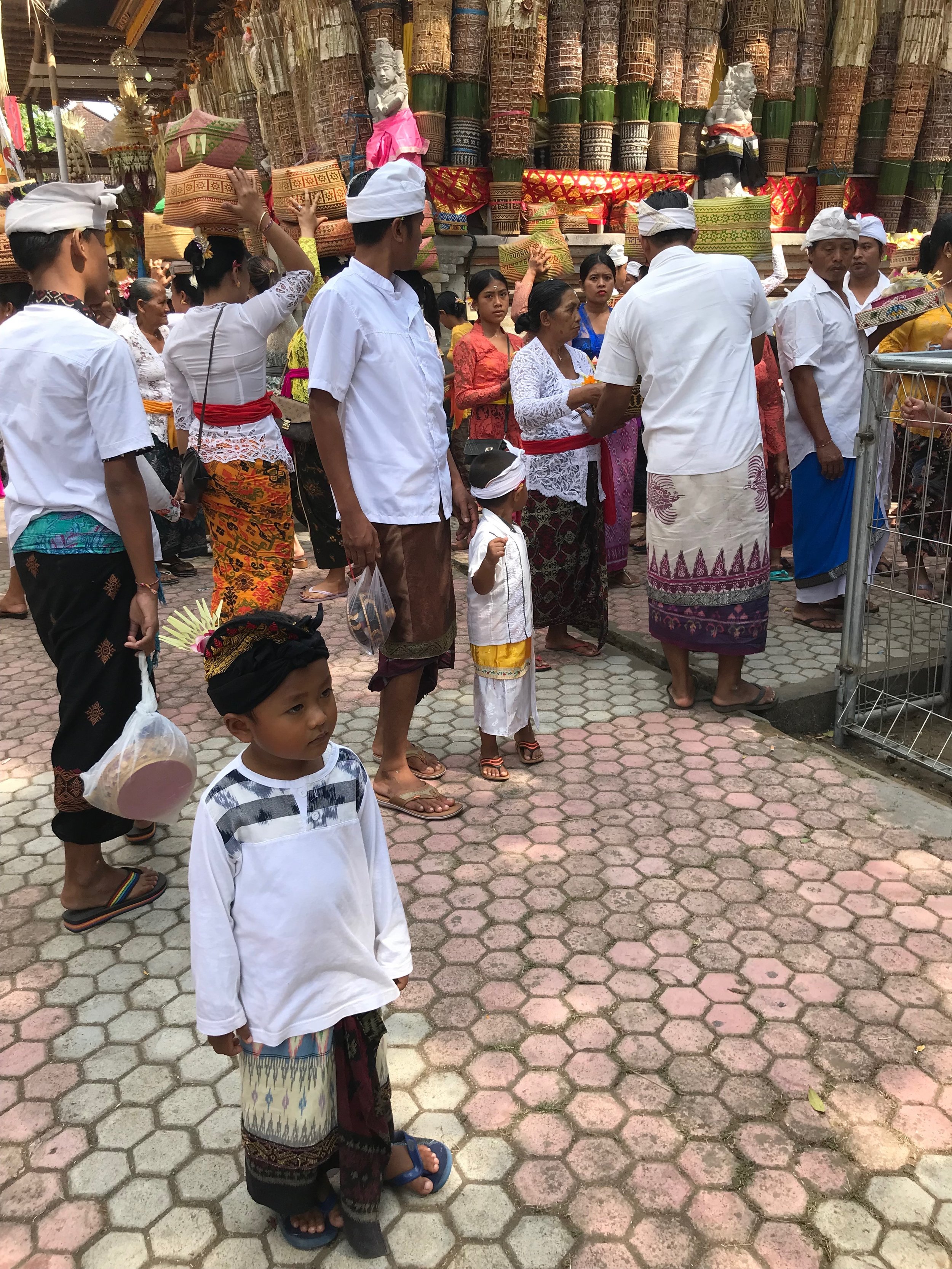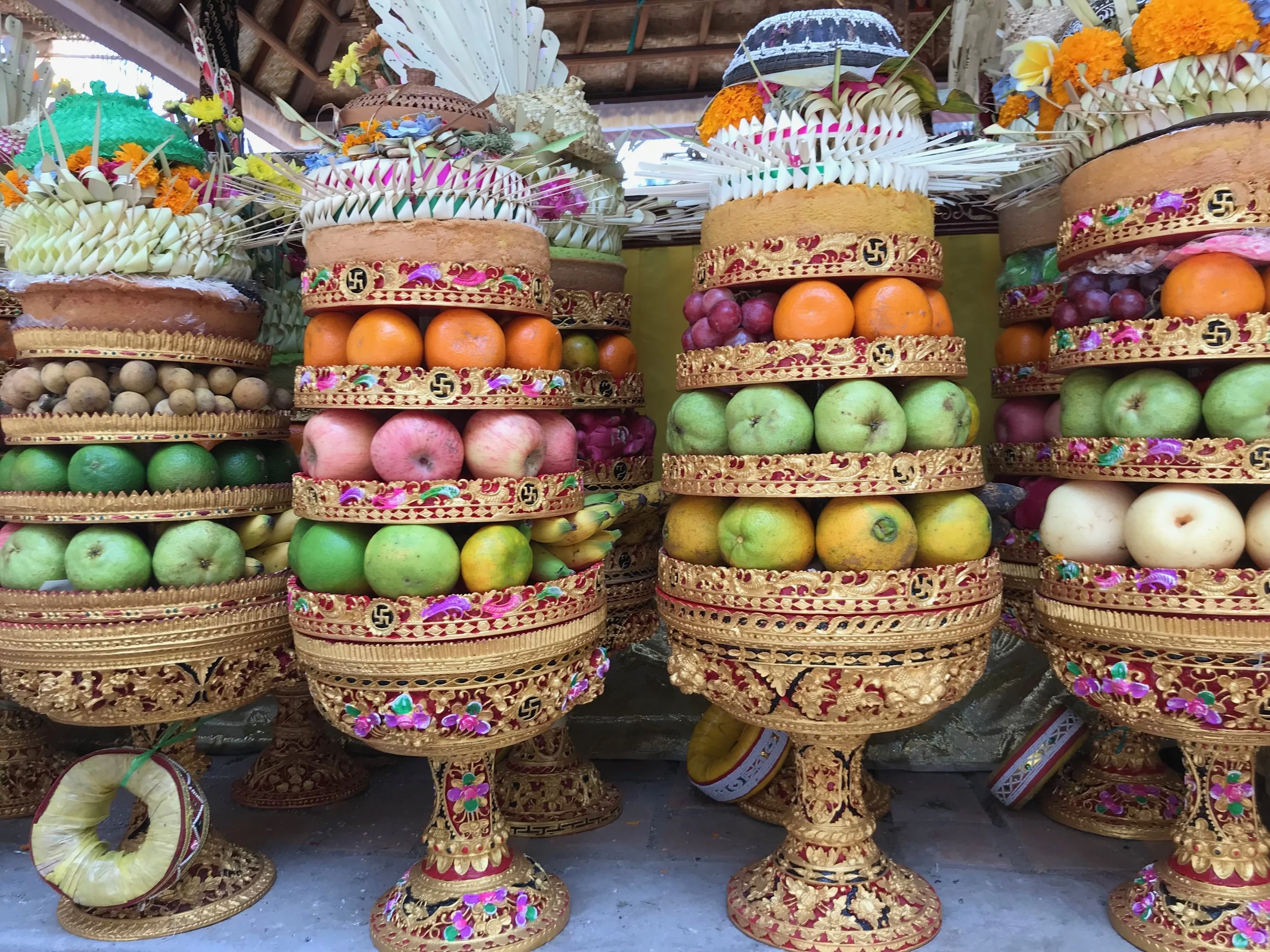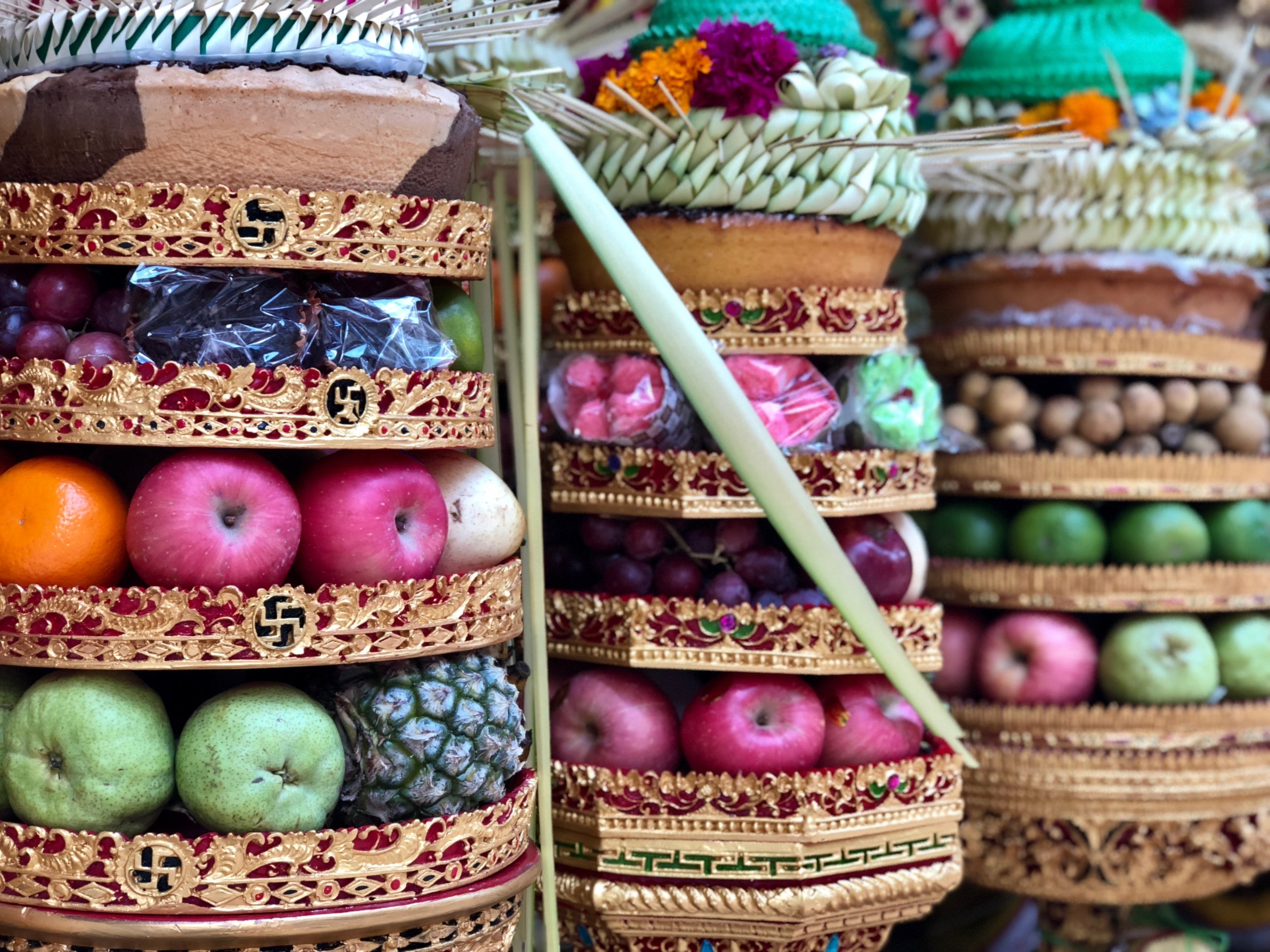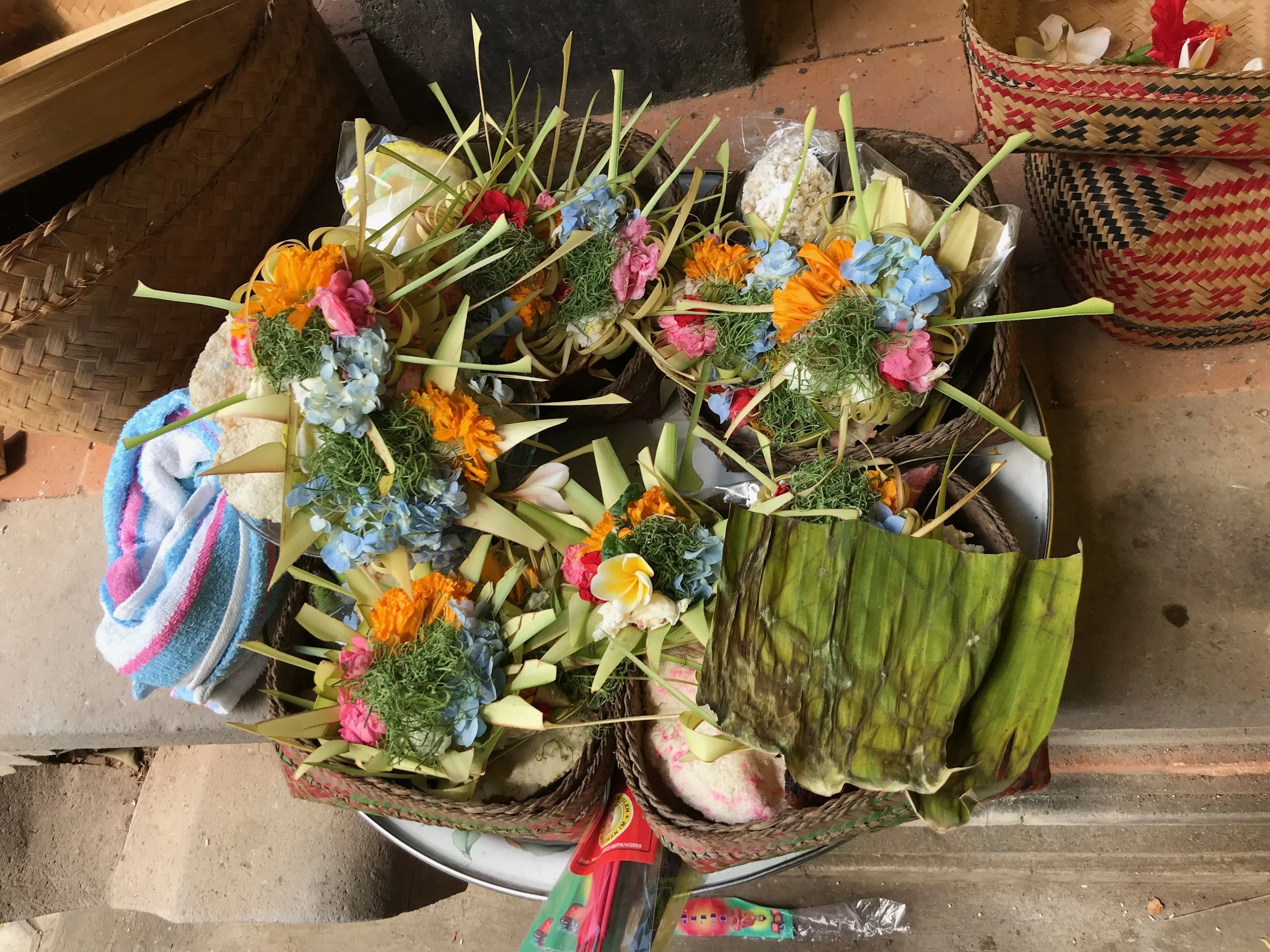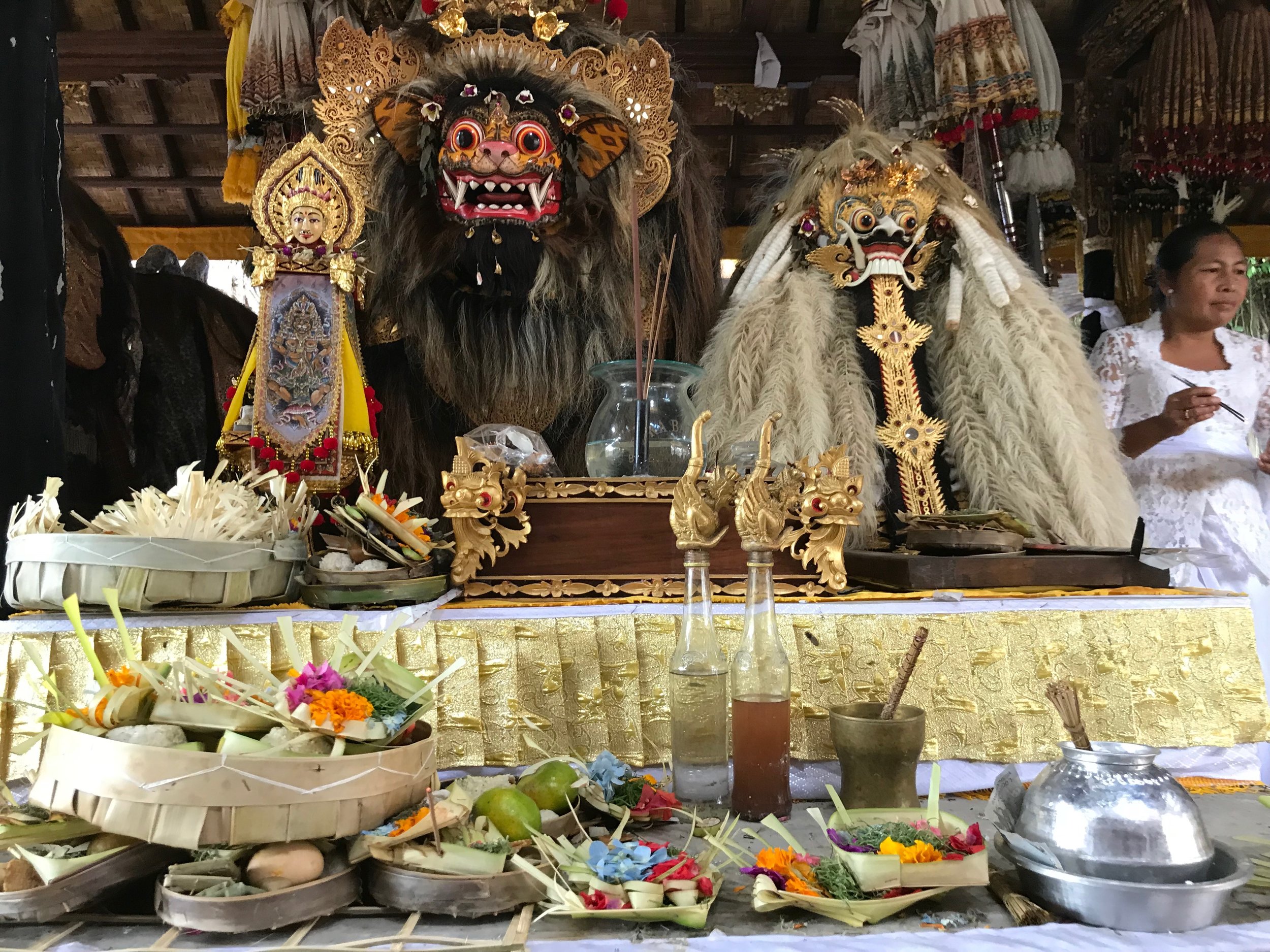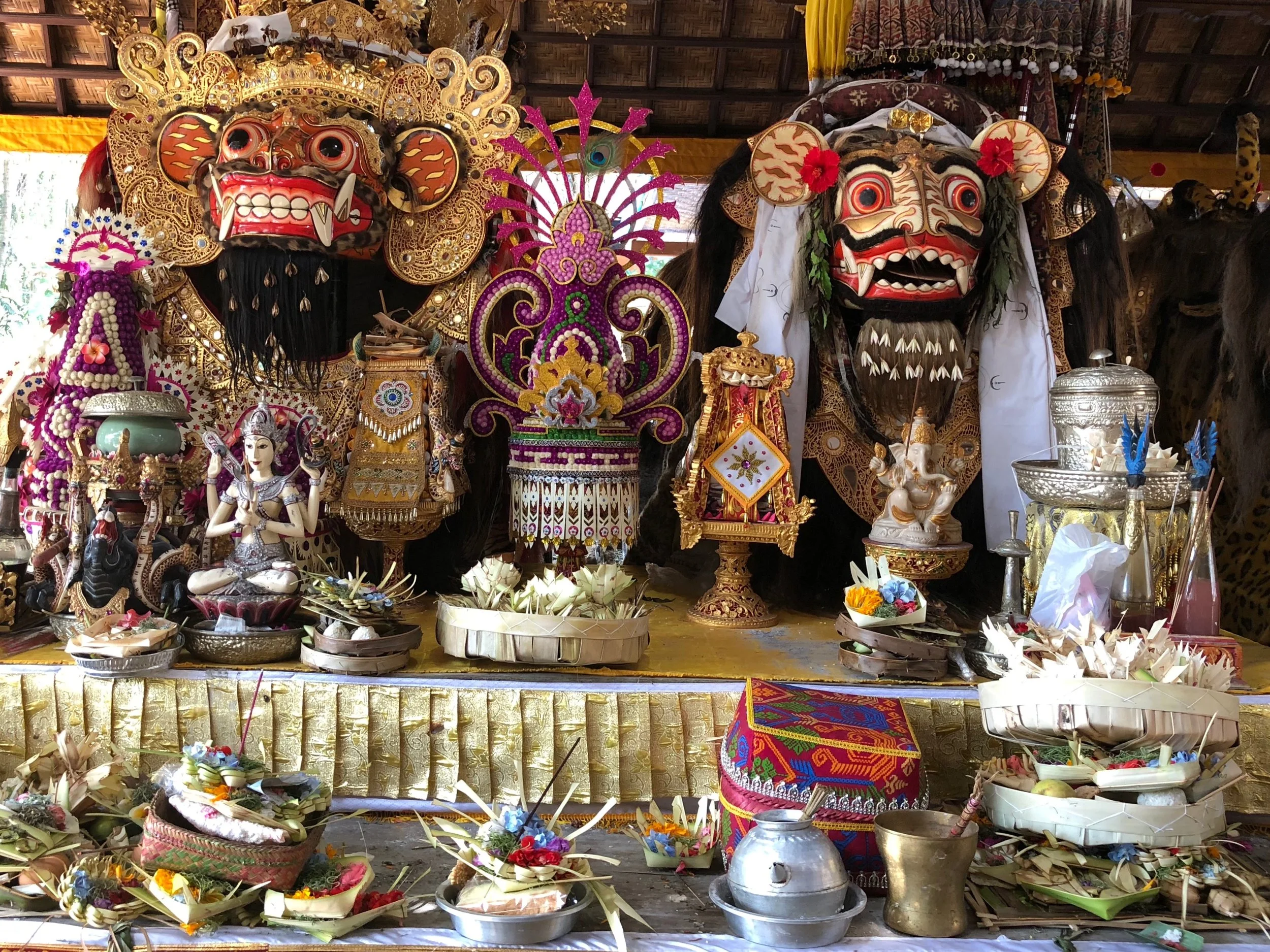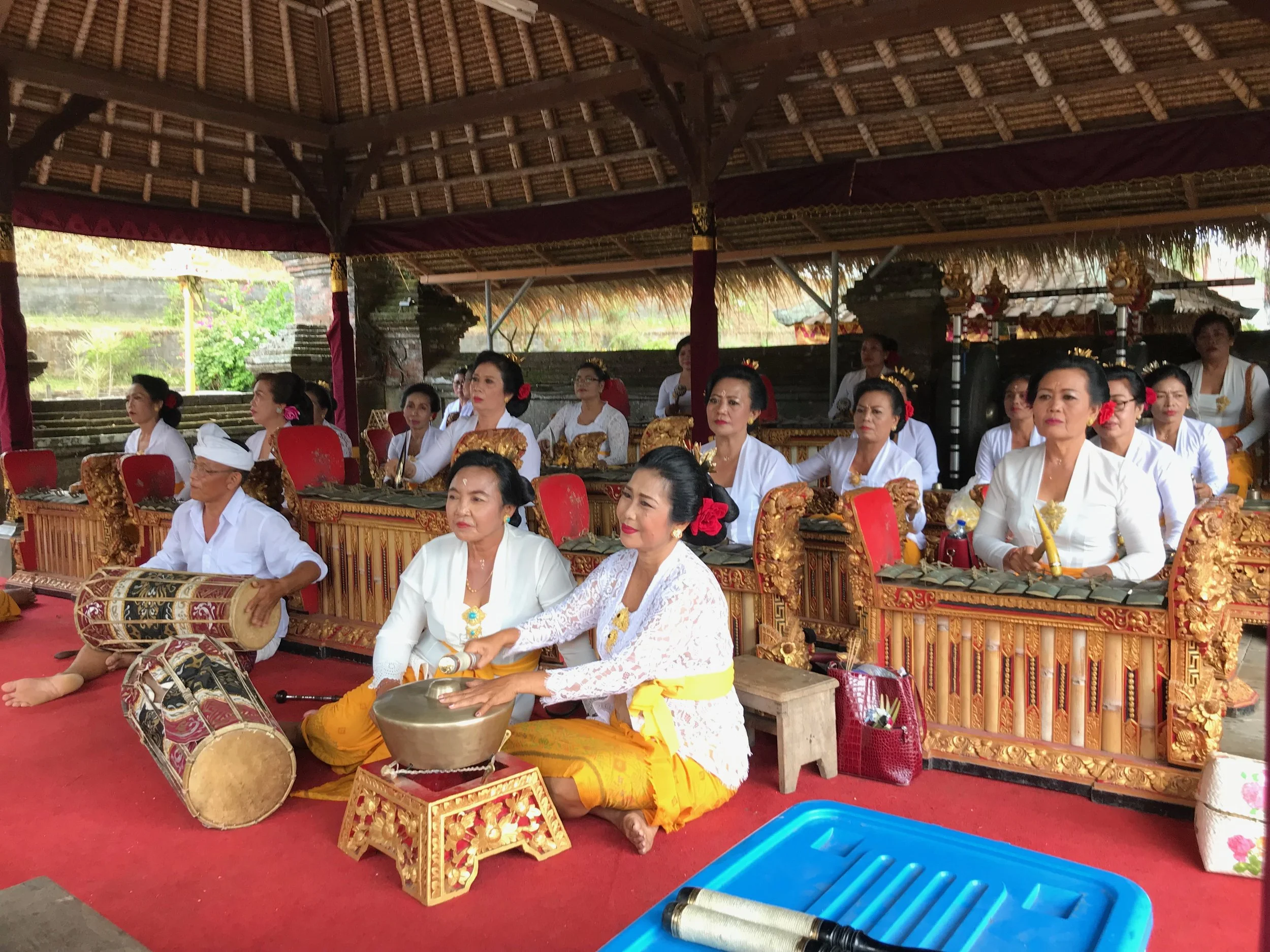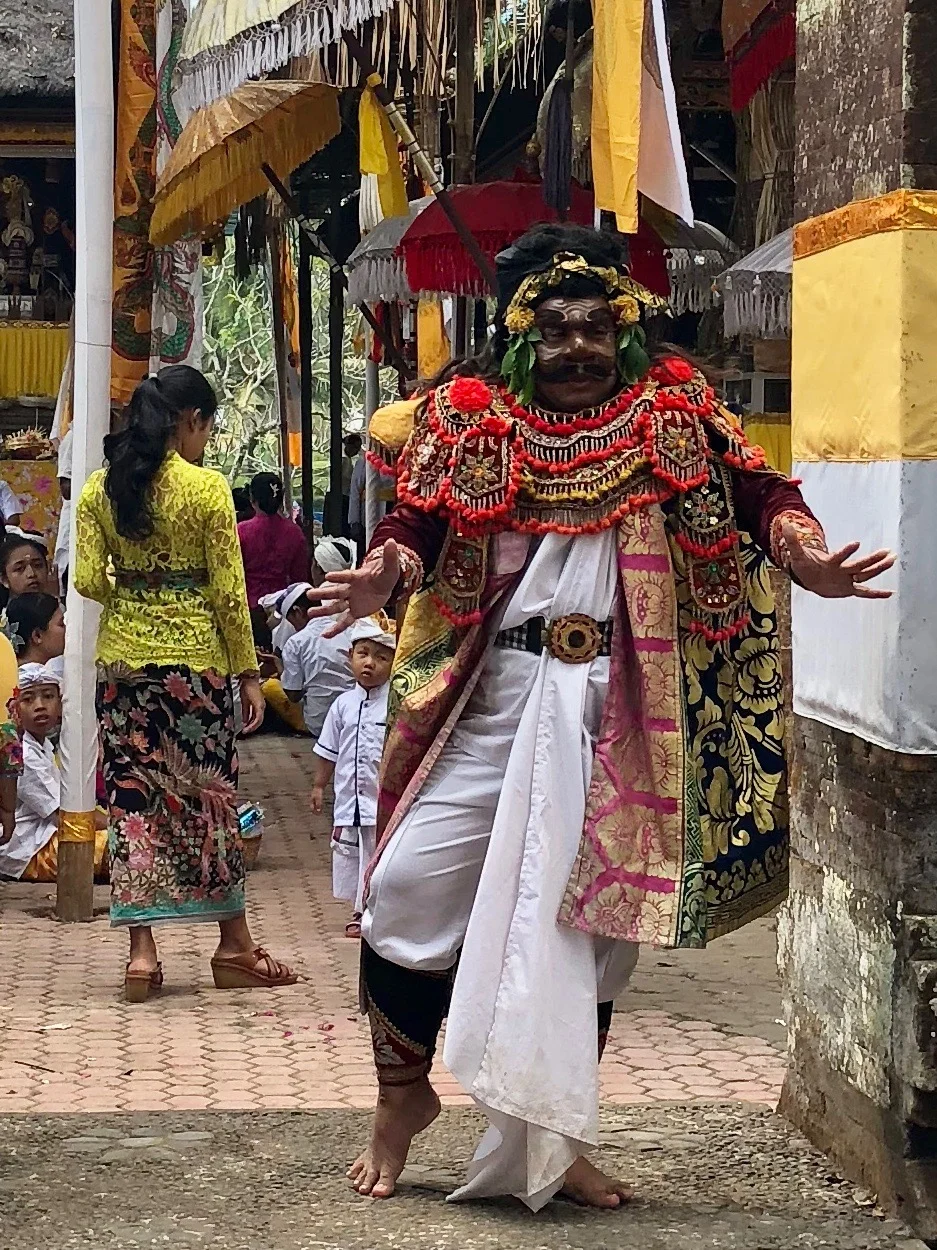We stumbled upon a full moon festival of Siat Sampian at a local temple near Goa Gajah, Bali — glimpsing a fascinating ritual but missing the big fight.
Pura Samuan Tiga, during the precursors to the Siat Sampian festival
Our driver seemed to be trying to dissuade us from visiting Pura Samuan Tiga.
“It will be very, very crowded,” he told us, “because of the festival for the full moon. Not a good time to go.”
But hearing there was a festival only made us want to visit all the more.
Temples popular on the tourist trail are always worth seeing, but we recommend finding at least one local temple on every trip. It’s a fascinating glimpse into another religion — especially when it’s the ever-enigmatic Hinduism, the major world religion I understand the least.
A man and his children pause under the elaborate temple offerings
Fences close off areas of worship at Samuan Tiga
Duke, a total Ravenclaw when it comes to research, will spend hours poring over websites and books when building out our itineraries for a trip. He found Samuan Tiga and suggested a stopover en route to the nearby giant mouth cave of Goa Gajah. Located in the village of Bedulu in the Gianyar regency, the temple is about a 20-minute drive from Ubud, where we based ourselves.
Pura Samuan Tiga might not be one of the most visited temples on the island — but it gives you a great feel for what these sprawling Hindu temple complexes are like. Especially if you’re lucky enough to happen upon it during a festival.
Bhoma guards the temple from malevolent spirits
The statuary in the temple was originally carved from volcanic rock
One of the outer courtyards at Samuan Tiga, which was much less crowded than those within
The vast, bustling temple complex evokes the feel of a village market
Built between 988 and 1011, the temple sports typical Balinese religious architectural design, with its soaring orange brick gates, weathered teak open-air pavilions, volcanic stone carvings of bulging-eyed monsters and thatched triangular rooftops. While most temples on Bali (pura in the local tongue) have three courtyards, Samuan Tiga is much larger, with seven.
There’s some debate around the reason for the temple’s name, which translates to “the meeting of the three.” Local lore holds that three warring Hindu sects came together to resolve their issues. The royal priest decreed that each kingdom would have three main temples, which represented not only the Hindu trilogy of Brahma, Vishnu and Shiva but the mountain, village and sea as well.
One area of the temple was filled with offering baskets
Like a National Geographic Article Come to Life
We had stumbled upon one of the oldest Hindu rituals on Bali: Siat Sampian (War of the Offerings), which takes place every 10th full moon. While we saw many crowds praying in the various courtyards, apparently we missed the battle that would take place later, when hundreds of pilgrims playfully “attack” each other, throwing arrangements called sampian, which consist of woven palm fronds pointing out like the rays of the sun.
That’s the trouble with knowledge sharing, even in this age of the internet. It was tough even discovering the name of the temple — and we didn’t learn about the details of the festival until we were back home. I wish our driver or another local had known more about Siat Sampian, and we could have tried to time our visit with the frenzied fake fight. Sigh.
There was still much to see, though. Women carried stacked woven baskets atop their heads, all dressed in long-sleeved lace tops, most of them white, paired with brightly colored sashes around their waists and ankle-length floral sarongs. Children, also in vibrant sarongs, munched on snacks.
Women carry their loads in woven containers atop their heads
Some of the men have adopted this means of carrying offerings
Children probably spend hours at the temple during the festival and snack throughout the day
Samuan Tiga sports seven courtyards — more than your typical Balinese temple — and they were all quite crowded
In certain parts of the temple, facing raised platforms, people crowded into tight spaces, sitting down to pray — a vast sea of worshippers, most of whom wore white shirts, the men also in white headbands with a sort of bow in front. Everyone sat quietly, arms extended in front of their faces, their hands pressed together. This is the purification process before the comedic war to come.
The crowds got downright claustrophobic in quite a few areas
People worshipped in different courtyards
This area was right off of the Barong pavilion
Offering baskets were everywhere, small square trays woven from palm fronds and filled with rice, flowers and fruit.
An elaborate floral offering
Beautiful offerings for the gods
Fruit is a popular offering
Worshippers create small offering dishes filled with flowers and food
An entire pavilion was filled with masks of Barong, who, despite his sharp fangs and wide eyes, is actually the personification of good.
Barong masks receive offerings
As frightening as he looks, Barong is actually reprepsentative of all that is good
Masks of Barong lined an entire pavilion at Samuan Tiga
In one corner of the temple complex, we stopped to listen to an entirely female gamelan troupe. I had always heard of the percussion-heavy, xylophone-like instruments being played by men and wondered if this was a new phenomenon.
An all-female gamelan band
As they played their jarring and discordant yet strangely hypnotic tunes, a man in costume approached for a dance. Covered in layers of colorful fabric with shimmering gold designs, barefoot, boasting long nails like claws, he descended the stairs. As he got closer, what caught my eye most was his frightening visage: a wide, wrinkled brown mask with a sweeping black mustache. Its features seemed pinched from the nose, lending an overall appearance of a rodent, not softened by the floral headband framing his face. If anything, it looked like foliage that had caught as he burrowed in the dirt. He made slow, sweeping movements, only his hands twitching rapidly, like the fluttering wings of a raven.
We think the character might be Topeng Bujuh, a comic figure in Balinese performances.
A creepy costumed character danced to the gamelan music
As we wandered through the courtyards, most people were extremely happy to see us. They grinned, said hello, greeting us with a sembah (a gesture of respect, similar to the Thai wai, where you place your palms together in front of your chest and bow). I took the opportunity to snap quick photos of the worshippers and almost every time, they smiled back at me, unoffended, much to my relief. It seemed they were happy to share their experience, that they were glad a couple of Western tourists had felt their sacred festival worthy of a visit. –Wally
Pura Samuan Tiga is one of the largest Hindu temples in central Bali
Pura Samuan Tiga
Jalan Pura Samuan Tiga
Bedulu
Blahbatuh
Kabupaten Gianyar
Bali 80581
Indonesia

